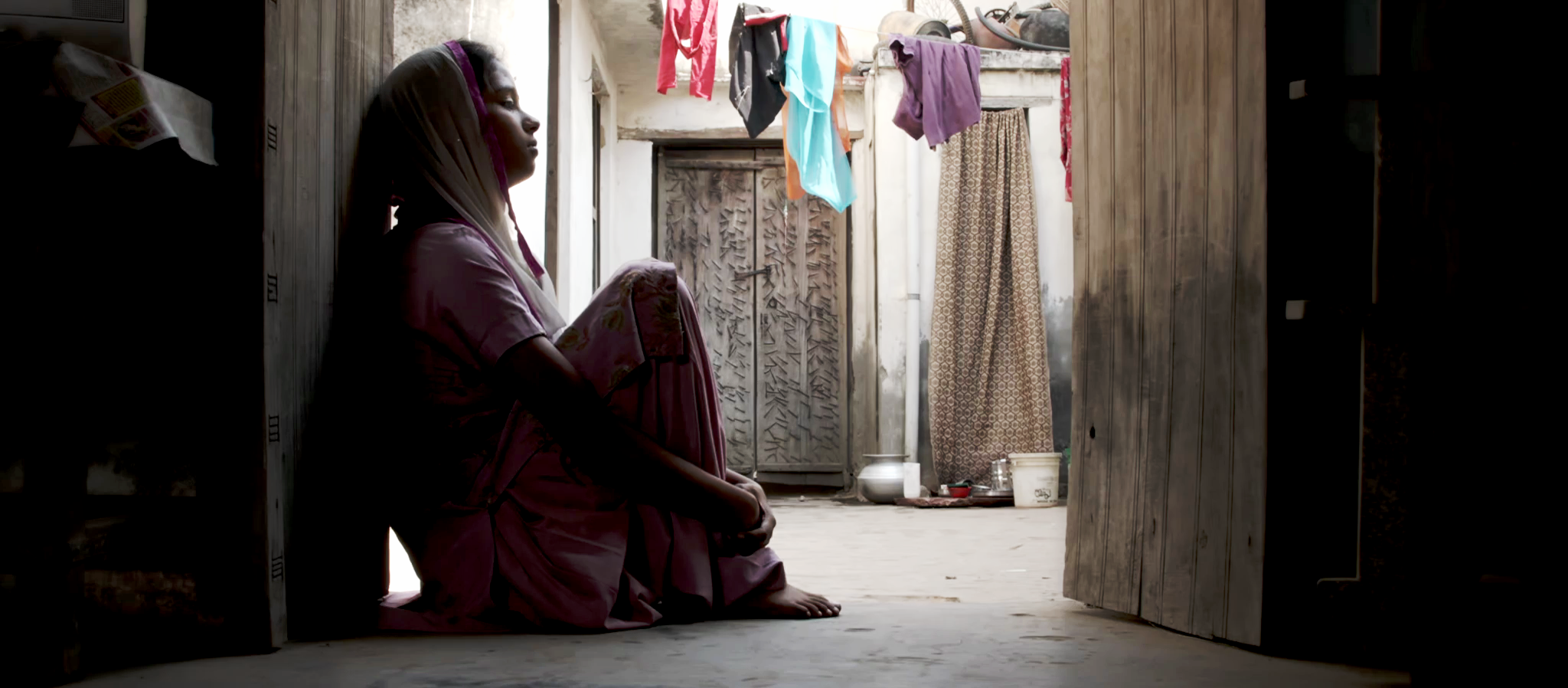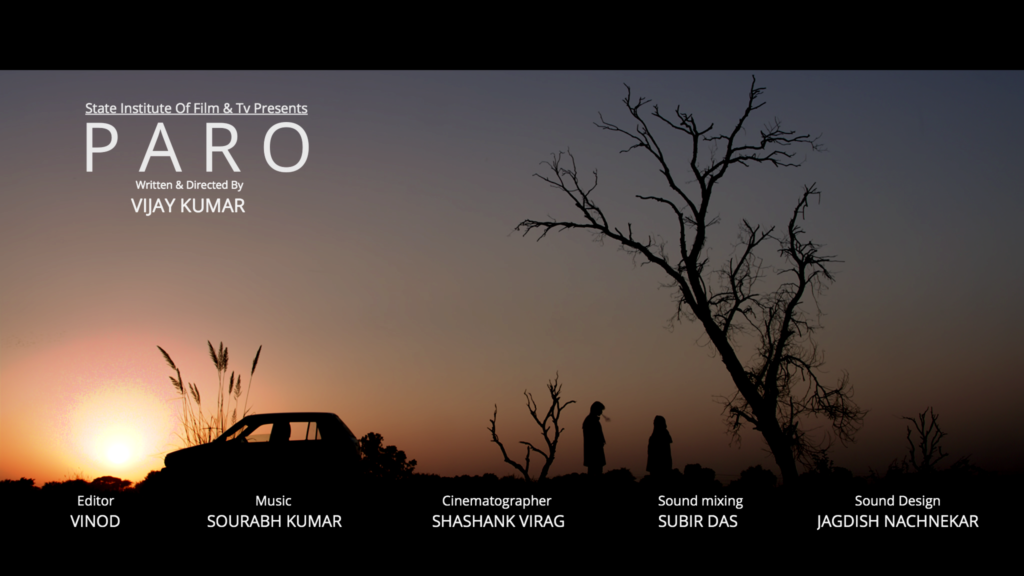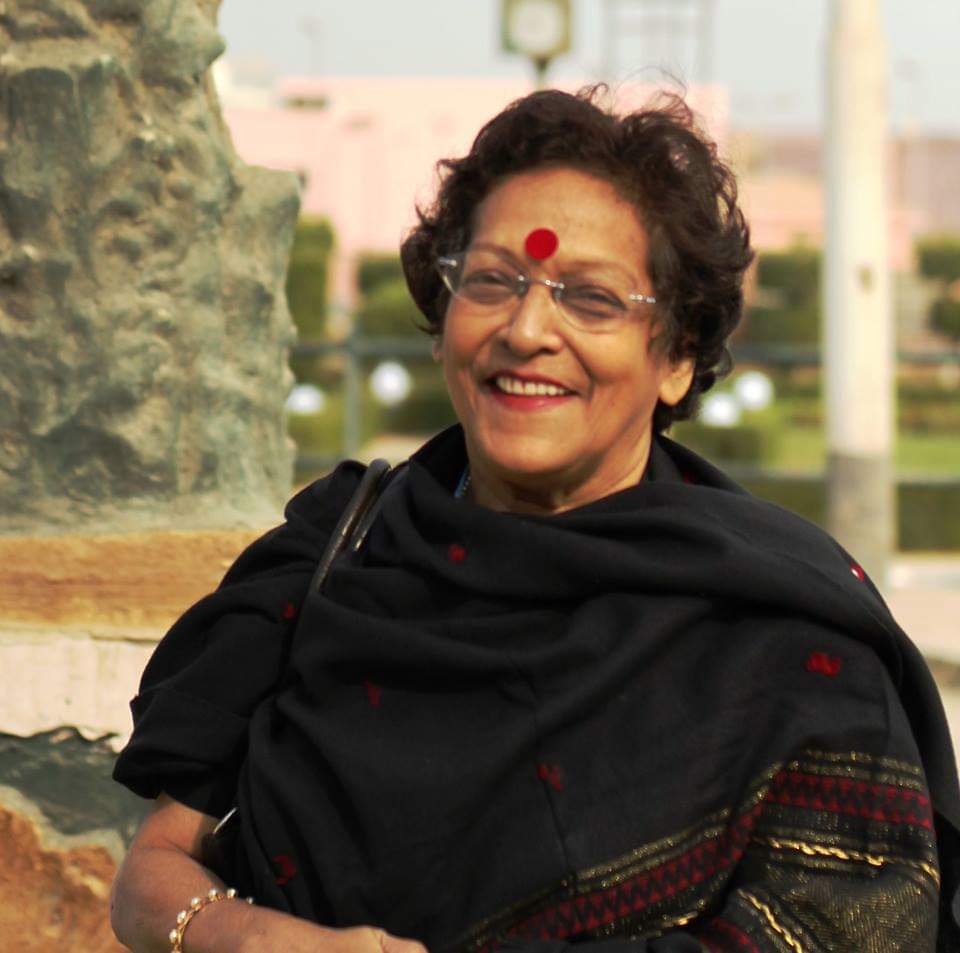Those who have never visited Haryana or do not have relatives living there may have never heard about “Paro Pratha” which translates as “the Paro Practice.” I did not know either and then I happened to watch a short fiction film by Vijay Kumar called Paro at a film festival, and was shocked to hear from the director that his film is based on a true practice that is rampant in Haryana till today. Paro is another name for bride-trafficking where a girl is sold not once but again and again through a hurriedly set up “wedding” to be sold to different “buyers” at different prices. The girls do not even know that this is an illegal practice, and that they can raise questions or even object to being trafficked from one family to the next.
Says director Vijay Kumar, “My college is at Rohtak in Haryana. I am thankful to creative writers and blog writers on internet I read a headline once that went “when women are cheaper than cattle”, and I began to research stories of bride trafficking on the Internet and decided to make my diploma film based on this story.” Vijay Kumar graduated in Film Direction from SIFTV, Delhi, in 2017 and this is his Diploma film.
Paro is a low-key, very soft and tender story of a girl called Paro who is married off to a bed-ridden, middle-aged man one fine day. She is actually ‘bought’ by her ‘mother-in-law’ from an agent who buys and sells these “brides” in the so-called “marriage market”. Marriage is therefore, reduced to a “mandi” where brides are bought and sold. She is enslaved to the family she is married to which covers every imaginable kind of household work, tending to her sick husband, cleaning the house and the cowshed and so on. She hardly talks but is friendly with the young stepson and a much younger kid, also her stepson. But her mother-in-law does not like her easy and warm relationship with the older step-son though the relationship is healthy and caring. So, she decides to sell off Paro once again after her “husband” dies. It is strange that her mother-in-law does not allow Paro to touch her or her food or to cook for her because she does not know what caste the girl belongs to. Yet, has no compunctions about making her work like a slave.
Haryana, Punjab, Uttar Pradesh and Rajasthan are the states where bride-trafficking is still quite rampant and the law turns a blind eye because there are hardly any complaints filed in police stations against the practice. “Paro is just a metaphor, a microcosm of hundreds of girls who are sacrificed so easily and traded like cattle to be sold from one family to another. I had to shoot it in seven days and it was a tough challenge,” says Vijay Kumar.
The brides often called “paros” or “molki” (one who has a price) are sold for anything between Rs. 4,000 to Rs. 30,000 depending on their age, beauty and whether they’ve been previously sold. Young adolescents are in great demand, since virgins are considered premium and therefore fetch the best price. It is chilling to think that girls as young as 10 have been sold into this sordid trade. But the numbers are hard to ignore. According to a National Crime Records Bureau report data, more than 22,000 girl children and women between the ages of 10 and 30 were kidnapped for marriage in 2012.
He adds that he went to a college in Rohtak and had heard about it but had not actually seen it happening. “I happened to meet a young girl who, I guessed, was a trafficked bride. But when I tried to speak to her, all I met with was silence that convinced me how much this girl had internalised this torture. It was as if she had pulled down the shutter on her life and locked herself up in a dark room”, says Vijay Kumar.

Way back in 1999, Rohit Parihar did a deeply investigative article for India Today under the heading Men from Backward Communities in Rajasthan Buy, Sell Brides with Impunity (March 8, 1999). He actually spoke to many of the girls trafficked as brides again and again, through agents. He says that the custom began as nata (relationship), where a married woman could choose to enter into a live-in relationship with another man with the first husband being paid a token sum as compensation. This money known as jhagda was meant to signify reimbursement for the expenses he incurred on the wedding.
The practice has now been distorted out of all recognition, although villagers still cling to the old names. Selling women into extramarital relationships to claim huge sums – sometimes running into lakhs of rupees – is becoming a dangerous trend across villages in Tonk, Ajmer, Bundi, Bhilwara and Baran. In several cases, even parents of the girls are involved in this trade.
Families in the northern states of India, especially Haryana which has the worst sex ratio in the country with only 879 women for every 1,000 men, have come up with a quick fix to deal with the shortage of women to marry their sons. They “import” them from other states where there are more women, and where the impoverished families of those women are ready to sell their daughters for a price. According to Dr. Anita Yadav, Director, Women Studies Centre (WSC), Maharishi Dayanand University, Rohtak, there are at least six to seven brides from outside the state in almost each of the 6,000 villages of Haryana.
Another inspiration for Vijay Kumar was an article by Danish Raza in The Hindustan Times with the heading, When Women Come Cheaper than Cattle (May 23, 2014.) Raza says, “The skewed sex ratio in Haryana, Punjab and western Uttar Pradesh has led to a flourishing trade in women from Assam, West Bengal, Jharkhand and Odisha, who are often bought for as little as Rs 5000.”
Paro was shot entirely on location in Haryana over seven to eight days because Vijay Kumar had neither the funding nor the time. To choose the girl who would play Paro, he conducted a workshop among students of acting and selected one of the students. “The mother—in-law is from theatre while the rest are all students from my school,” says Vijay Kumar. The beauty of the film lies in its low-key and sensitive handling which spells out the contrast in the harsh and inhuman subject it deals with. The cinematography avoids bright lighting or colour at any point and even the music, beginning ironically with a traditional wedding song, is excellent. There is very little dialogue but the silences speak for themselves. There are no slogans raised, no flags held aloft, no activism because there is hardly any activism as the victims do not even know that their rights are being violated. And all this is happening right under our noses in India in 2019.


 [/column]
[/column]